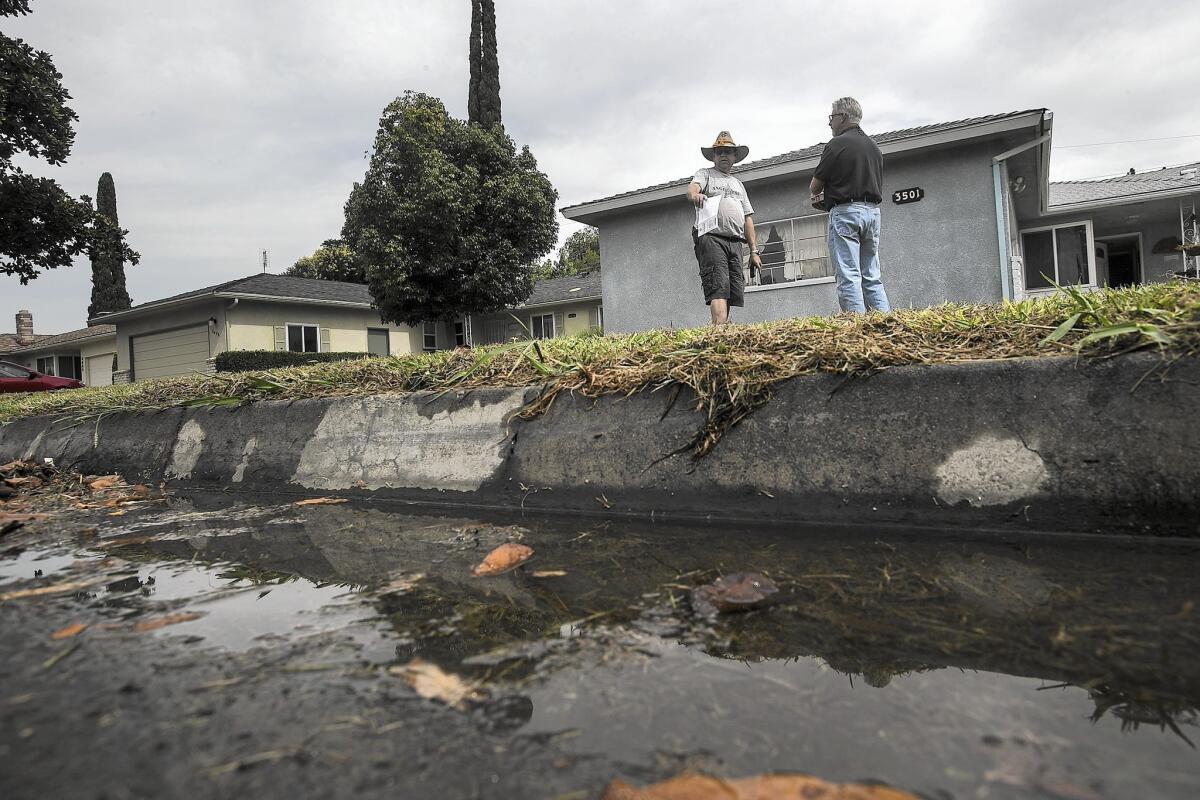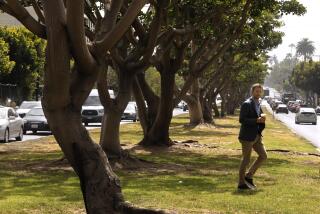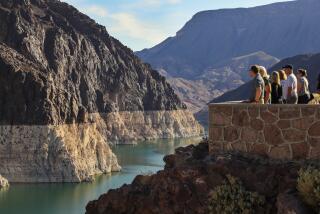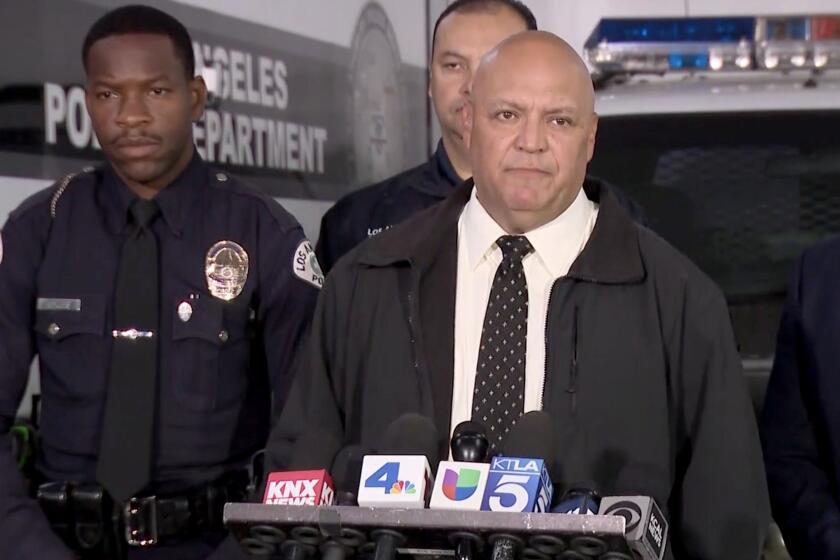As its water dwindled, Fresno cracked down hard

Don Wells spotted a trail of pooling water and slowed his van. Runoff from a sprinkler gone rogue streamed down a long block of thirsty brown lawns, watering the sidewalk.
“There it is,” he said, pulling up to a house with grass too wet for this time of day. He grabbed his city-issued clipboard and a small digital camera. He was ready to snap a photo of the water violation before he even approached the property, just in case things got confrontational.
“You don’t want people seeing you take a picture, basically,” Wells said. “They don’t like that too much.”
Wells tuned out a dog whose barking punctured the morning lull. He straightened his shoulders and reached for the doorbell.
With water monitors like Wells on the prowl, Fresno is taking a more aggressive tack than most cities in California’s battle against the severe drought. In one month, Wells and his water conservation team handed out 347 of the 838 penalties issued by all the water districts statewide.
Across the state, Los Angeles issued eight fines and Long Beach gave out two in the same time period, while dozens of other cities issued none. Sacramento penalized 191 violators, the second-most in the state. At least 97 water districts don’t even have outdoor watering restrictions to enforce, state officials said.
In Fresno, the cuts have come primarily from outdoor watering restrictions that are monitored, enforced and ticketed by a handful of city staff who go face-to-face with water violators and encourage neighbors to report offenders.
The campaign is working. After Gov. Jerry Brown’s unprecedented order for urban Californians to use 25% less water by next year, Fresno scaled back its consumption 33% last month.
The color brown dominates the landscape, as if the city has been put through a dusty photo filter. Yellowing lawns, parks and miles of street medians bake in the 106-degree weather.
Patches of green grass stick out, and neighbors are quick to report any yard that seems too lush.
Teachers, restaurant workers and gas attendants can recite from memory the city’s new mantra: “Don’t frown on brown.” TV weather reporters remind everyone about the days when lawn watering is prohibited.
“Our people get it,” said Thomas Esqueda, the city’s public utilities director. “The other thing we’ve noticed, though, is there are still some people who don’t get it.... We still have work to do.”
Things got serious for Fresno last summer after the city’s groundwater dropped four feet and its allocations of imported, stored water dipped 50% from one reservoir and all the way to zero from the other. Fresno gets about 90% of its supply from groundwater, so officials knew they had to act. Beginning in August, lawn watering was restricted to twice a week, one rule among many.
Officials this year began combing through water meter numbers to back up disputes and pinpoint violators. In March, about 3,000 households were watering lawns every day of the week. By June, 2,600 of those households had cut back. The warnings are working, Esqueda said. He’s proud of what the city and its 515,000 residents have accomplished so far.
Officials offer drought-friendly landscape consulting and adjust sprinklers and water timers free of charge. A push to talk to the city’s large Hmong and Latino communities has also made a dent. Thousands of dollars have been put into full-page ads, air time and colorful mailers and notifications.
But the work’s not finished. In his office, Esqueda consults rolls and rolls of parcel maps with color-coded dots pinpointing areas that could cut more water.
Although nearly 3,000 daily lawn waterers improved, 1,500 other households started watering every day when the summer-like heat kicked in this year. In one gated community, about 1 in 3 homeowners still need a reminder that the days of green lawns are over.
The city allows homes with odd-numbered addresses to water on Tuesdays and Saturdays and even-numbered addresses on Wednesdays and Sundays, only before 9 a.m. and after 6 p.m., to reduce evaporation. A penalty costs $45, and after four citations, the city has the right to cut off the water.
Things haven’t gotten that extreme yet, and Esqueda said he hopes they won’t, adding that the goal isn’t to punish but to educate. The first fine is waived as long as the violation doesn’t recur within two years. The second penalty can be deferred if the offender agrees to attend a free water conservation class.
“Hopefully that spurs a conversation,” Esqueda said. Most of these offenders didn’t know about the new water rules or had no idea how to set their water timers.
Back out in the neighborhood, Wells rang the doorbell and was met by a sturdy man in a vintage military hat.
“Sir, hi, I’m with the city of Fresno,” Wells said to Kimmel Kinion, 59. “Are you familiar with the watering schedule?”
Kinion walked with Wells out to the lawn.
“I don’t have them on a timer. I made a mistake this morning of going back to sleep,” he said, looking at his sprinklers. “I turned it off when the street sweeper asked me to.”
Wells explained the rules and told Kinion he can learn more about adjusting his sprinklers and, perhaps, some drought-friendly landscaping.
“Actually, I’m considering turning part of my yard into a desert motif,” Kinion said. “I’m thinking about putting a palm tree over there, a cactus by this garden here, maybe some red chips.”
Good idea, Wells said. “My yard’s just dirt. The eyesore of the neighborhood.”
Kinion initialed a document on Wells’ clipboard. It’s his first official write-up, so he got off with a gentle warning.
“Well, I’m glad you came by,” he said. “I didn’t know.”
On a good day, Wells — yes, he’s heard that water joke about his name before — talks to 20, maybe 25, people. He’ll start the day with as many as 300 emails and helps the team tackle more than 100 calls each day from people reporting water waste.
Water conservation officials expect the penalties issued in May will total more than the 347 from April. And they’re testing a new smartphone app that will be yet another way for residents to report water waste.
City officials are confident they will be able to meet the governor’s mandate to keep their water consumption down. The average resident in 2014 used 152 gallons of water a day. In 2013, it was 171. Esqueda thinks Fresno can cut it down to 121 gallons by the end of this year.
But he worries about what will happen if it doesn’t rain by next summer. For a city once known in the state as a heavy water user, more cuts will mean even more sacrifices.
Around town, residents say other cities need to do their part. Fresno can’t be the only one with ugly lawns and parks.
On a cloudy, hot afternoon at Woodward Park, Sharon Krause, 69, ambled along with her grandson and watched dozens of kids play on fields of dry grass and dead leaves.
Krause said she thinks about the drought a lot. She hasn’t planted flowers in two years and times every shower. She’s down to 31/2 minutes.
Looking around at all the brown and yellow, she nodded in approval.
“When I see this, you know what I feel? I’m glad. People are finally starting to get it,” she said. “We’ve been awfully spoiled.”
rosanna.xia@latimes.com
Twitter: @RosannaXia
More to Read
Start your day right
Sign up for Essential California for news, features and recommendations from the L.A. Times and beyond in your inbox six days a week.
You may occasionally receive promotional content from the Los Angeles Times.







